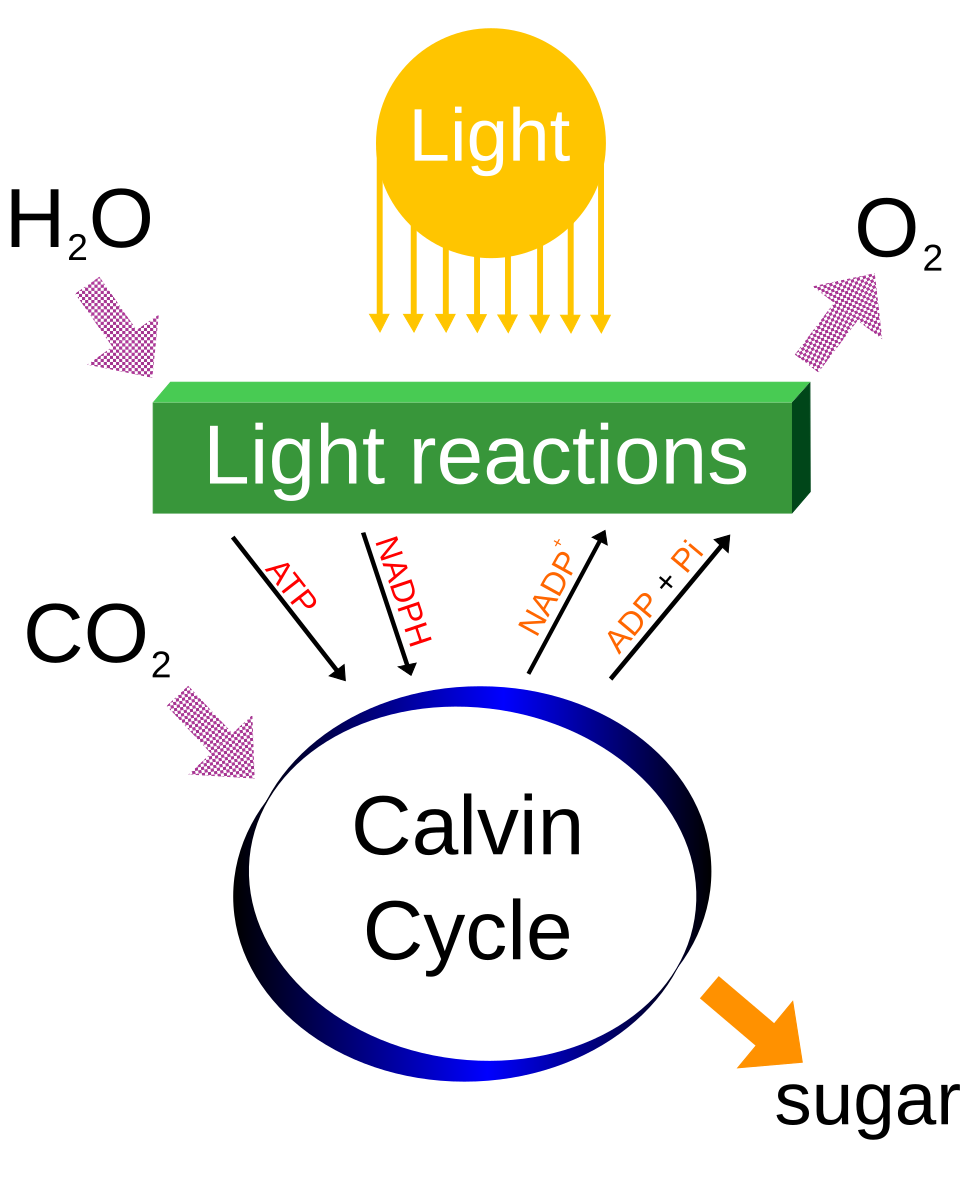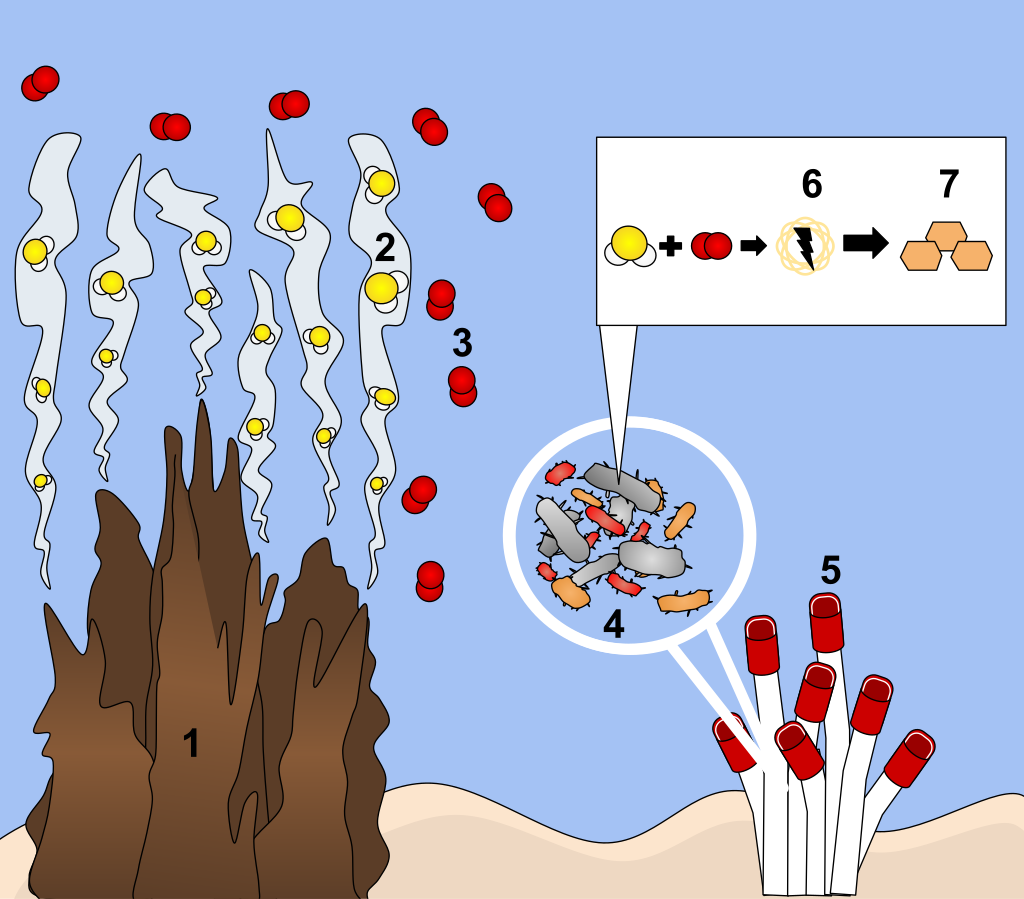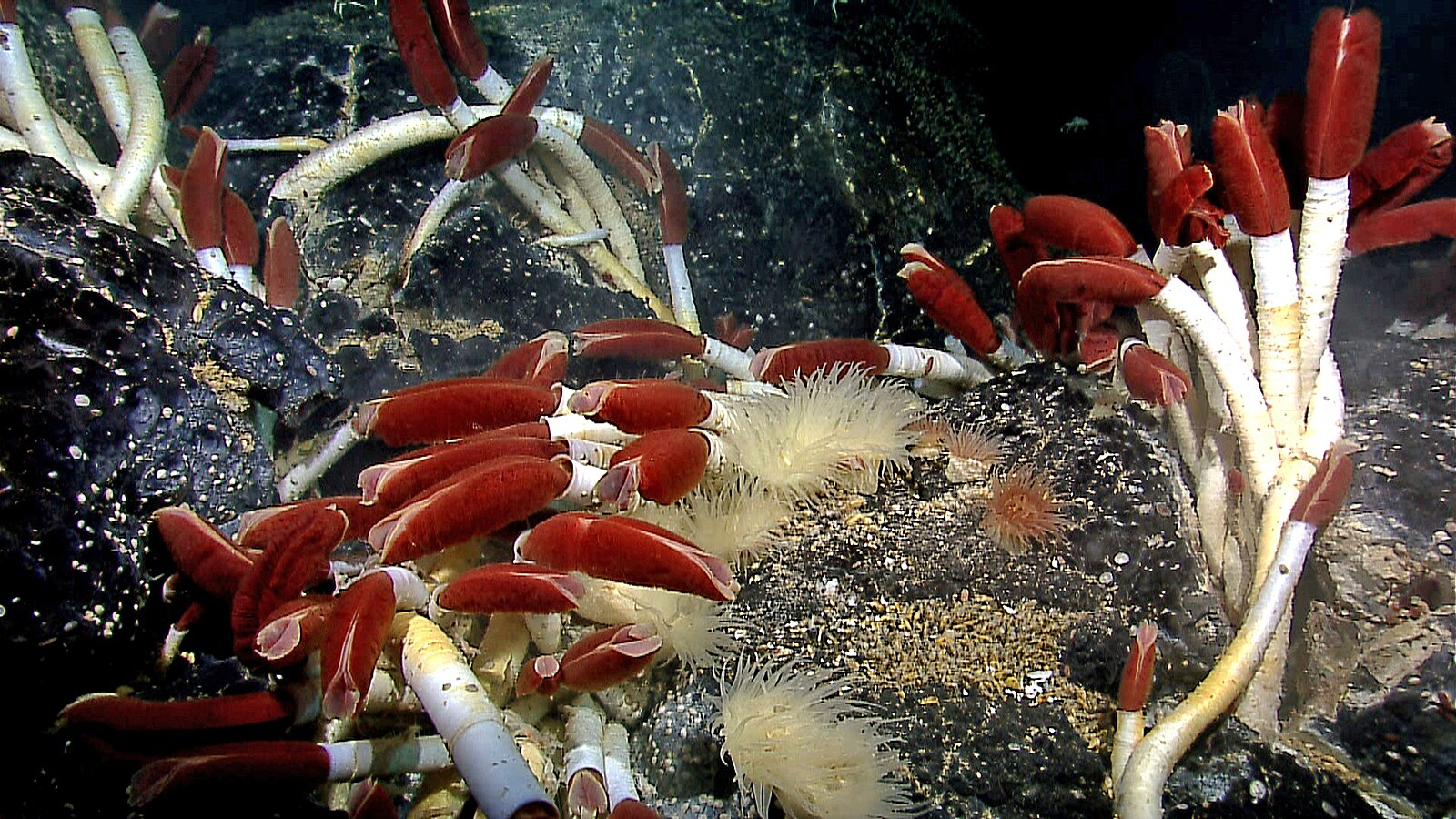IB Syllabus focus:
‘Photosynthesis uses light; chemosynthesis uses exothermic inorganic reactions. In light-poor ecosystems, chemoautotrophs are the main energy source sustaining food webs.’
Autotrophs are the foundation of ecosystems, converting external energy sources into organic matter. Understanding photoautotrophs and chemoautotrophs highlights how energy enters ecosystems under varied environmental conditions.
Photoautotrophs: Harnessing Light Energy
Definition and Process
Photoautotrophs: Organisms that use light energy, carbon dioxide, and water to produce glucose through photosynthesis.
Photoautotrophs dominate most ecosystems as the primary producers, initiating energy flow by capturing solar radiation.

Simplified diagram of photosynthesis showing light, carbon dioxide, and water converted into glucose and oxygen by a leaf. Labels reinforce the flow of matter and energy that underpins photoautotrophic production. Source.
Key Requirements
Light energy as the primary driver.
Carbon dioxide (CO₂) from the atmosphere or dissolved in water.
Water (H₂O) as an electron donor and hydrogen source.
Pigments (e.g., chlorophyll a and b) to absorb photons.
Importance in Ecosystems
Photoautotrophs provide the base of most food chains. Without them, higher trophic levels would collapse. They also regulate atmospheric CO₂, linking directly to climate systems.
Chemoautotrophs: Harnessing Chemical Energy
Definition and Process
Chemoautotrophs: Organisms that use the energy from exothermic inorganic chemical reactions to synthesise organic compounds.
Unlike photoautotrophs, chemoautotrophs do not rely on sunlight. Instead, they oxidise inorganic molecules to obtain energy for carbon fixation.
Common Energy Sources
Hydrogen sulphide (H₂S), common in hydrothermal vents.
Ammonia (NH₃) and nitrites (NO₂⁻), utilised by nitrifying bacteria.
Ferrous iron (Fe²⁺) in certain bacterial groups.
Hydrogen gas (H₂) in some microbial communities.
Ecological Role
Chemoautotrophs are often found in light-poor ecosystems such as deep-sea hydrothermal vents, caves, and groundwater.

Diagram of chemosynthesis at a hydrothermal vent showing H₂S and O₂ feeding symbiotic microbes in tubeworms to fix CO₂ into sugars. It illustrates how chemical energy substitutes for sunlight where light is absent. The “high-energy precursor” step appears as extra detail beyond the syllabus but clarifies energy transfer. Source.
Comparing Photoautotrophs and Chemoautotrophs
Energy Source Differences
Photoautotrophs depend on light energy, making them dominant in terrestrial and shallow aquatic ecosystems.
Chemoautotrophs depend on chemical energy, thriving in sunlight-absent environments.
Ecological Distribution
Photoautotrophs: Forests, grasslands, lakes, oceans.
Chemoautotrophs: Hydrothermal vents, deep-sea sediments, anaerobic soils, sulphur springs.
Relative Importance
While photoautotrophs underpin global productivity, chemoautotrophs highlight the adaptability of life in extreme environments. They support highly specialised organisms like giant tube worms and vent crabs.

High-resolution photograph of a hydrothermal vent community dominated by Riftia pachyptila, which host chemoautotrophic bacteria for carbon fixation. This illustrates food webs in light-poor environments powered by chemical energy rather than sunlight. The image also shows nearby fauna (e.g., anemones, mussels), which are additional context beyond the syllabus focus. Source.
Biochemical Basis of Energy Conversion
Photosynthesis
Photosynthesis (Generalised) = 6CO₂ + 6H₂O + light energy → C₆H₁₂O₆ + 6O₂
CO₂ = Carbon dioxide, atmospheric/dissolved
H₂O = Water, electron donor
C₆H₁₂O₆ = Glucose, organic energy store
O₂ = Oxygen, by-product
This process not only sustains ecosystems but also contributes to atmospheric oxygen levels.
Chemosynthesis
Chemosynthesis (Hydrogen Sulphide example) = 6CO₂ + 6H₂O + 3H₂S → C₆H₁₂O₆ + 3H₂SO₄
CO₂ = Carbon dioxide, inorganic carbon source
H₂O = Water
H₂S = Hydrogen sulphide, energy source
C₆H₁₂O₆ = Glucose, organic energy store
H₂SO₄ = Sulphuric acid, by-product
Different chemical substrates may replace H₂S, depending on the habitat and microbial species.
Role in Food Webs and Ecosystem Functioning
Photoautotroph-Based Webs
Dominate terrestrial and freshwater systems.
Support high biodiversity through abundant net primary productivity.
Influence global carbon cycling and oxygen balance.
Chemoautotroph-Based Webs
Found in extreme ecosystems, often considered analogue habitats for early Earth or extraterrestrial environments.
Support unique communities, e.g.:
Giant tube worms hosting symbiotic chemoautotrophic bacteria.
Bivalves and shrimp reliant on vent-produced organic matter.
Relevance to IB Environmental Systems and Societies
Systems Perspective
Understanding the contrast between photoautotrophs and chemoautotrophs underlines how ecosystem functioning depends on energy capture. Both strategies highlight ecological diversity in energy acquisition.
Sustainability Insight
Reliance on photoautotrophy explains why most agricultural and forestry systems focus on plants.
Awareness of chemoautotrophic systems expands understanding of biodiversity in environments once thought uninhabitable.
Link to Human Impact
Climate change threatens photosynthetic productivity through altered light and water availability.
Pollution and deep-sea mining risk destroying chemoautotrophic ecosystems before they are fully studied.
Key Takeaways for Students
Photoautotrophs: Light-driven, dominate global ecosystems.
Chemoautotrophs: Chemical-driven, sustain life in dark environments.
Both underpin food webs, exemplifying the adaptability of life and energy pathways in ecosystems.
FAQ
Photoautotrophs mainly use chlorophyll a as the primary pigment for photosynthesis. It captures light in the blue-violet and red wavelengths, driving the light reactions.
Accessory pigments such as chlorophyll b and carotenoids broaden the spectrum of absorbed light, allowing organisms to capture more solar energy. These pigments transfer the absorbed energy to chlorophyll a for efficient use.
Hydrothermal vents release hydrogen sulphide, methane, and other reduced compounds, which serve as energy sources for chemoautotrophic bacteria.
They also provide stable high temperatures and mineral-rich conditions that sustain microbial metabolism. In turn, these microbes support specialised vent fauna through symbiotic relationships.
Through photosynthesis, photoautotrophs release oxygen as a by-product of water splitting. This process maintains the oxygen content of the atmosphere, which is vital for aerobic life.
Without widespread photosynthetic activity, atmospheric oxygen would be quickly depleted by respiration and combustion processes.
Chemoautotrophs rely on oxidation–reduction reactions involving inorganic compounds. Common processes include:
Oxidation of hydrogen sulphide (H₂S) → sulphuric acid
Oxidation of ammonia (NH₃) → nitrites/nitrates
Oxidation of ferrous iron (Fe²⁺) → ferric iron (Fe³⁺)
These reactions release energy that is then channelled into carbon fixation.
Chemoautotrophic systems reveal how life can thrive in extreme, lightless environments, providing models for early Earth conditions.
They also inform the search for extraterrestrial life, as similar chemical processes could sustain organisms on other planets or moons where sunlight is absent.
Practice Questions
Question 1 (2 marks)
Define the term chemoautotroph and identify one environment where such organisms are typically found.
Mark Scheme
Definition of chemoautotroph as organisms that use energy from exothermic inorganic chemical reactions to synthesise organic compounds. (1 mark)
Correct identification of a typical environment such as hydrothermal vents, deep-sea sediments, caves, or sulphur springs. (1 mark)
Question 2 (5 marks)
Compare the roles of photoautotrophs and chemoautotrophs in sustaining ecosystems.
Mark Scheme
States that photoautotrophs use light energy to produce organic matter through photosynthesis. (1 mark)
States that chemoautotrophs use chemical energy from inorganic substances (e.g., hydrogen sulphide, ammonia) to fix carbon. (1 mark)
Explains that photoautotrophs dominate terrestrial and aquatic ecosystems, providing the base of most global food chains. (1 mark)
Explains that chemoautotrophs sustain ecosystems in light-poor environments such as hydrothermal vents. (1 mark)
Clear comparison of ecological significance (e.g., photoautotrophs underpin global productivity; chemoautotrophs support specialised life in extreme environments). (1 mark)

